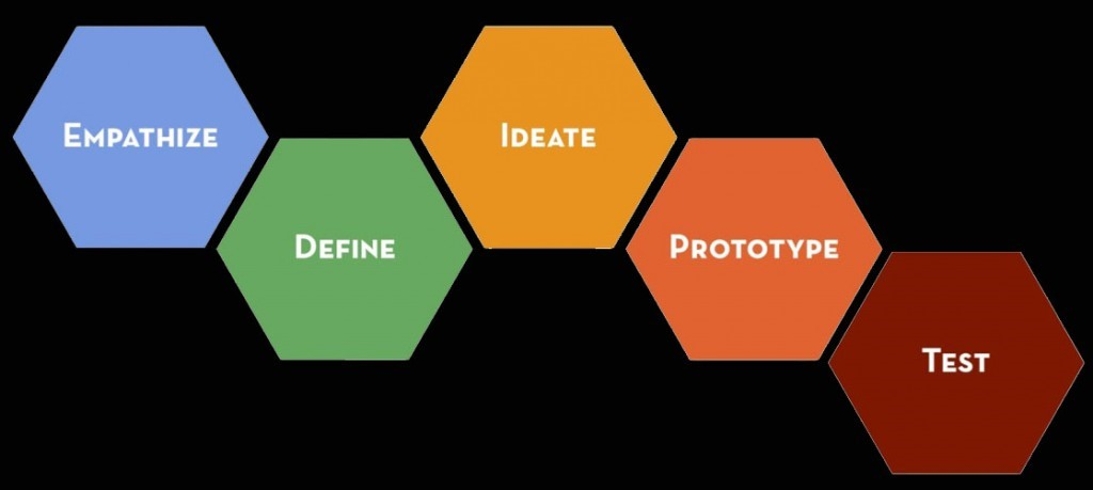What role does Design Thinking play in Learning Experience Design?
January 24, 2020

This post was written by Brian Salerno.
In recent years, Design Thinking techniques, developed and adapted by organizations such as IDEO.org and the Stanford d.School, have become increasingly popular approaches utilized to drive creative thinking and innovation within companies, non-profit organizations, governmental agencies, educational institutions, and other settings. These Design Thinking techniques include a variety of structured activities and approaches individuals or groups can engage in to inspire new creative innovations, to guide the ideation and problem-solving process, and to explore ways to implement new ideas.
Simultaneously, the discipline of Learning Experience Design has emerged as the latest evolution of instructional design. Inspired by and infused with approaches from user experience design (UX), learning and cognitive sciences, learning analytics, interface design (UI), universal design for learning (UDL), and educational technology, Learning Experience Design (or LX for short) is a design discipline that emphasizes creation of impactful learning experiences that place the learner in the center. Learning Experience Design requires that we understand the personal, educational, and even professional contexts within which our learners reside, and to create a learning ecosystem that supports the whole learner and their educational goals. Successful LX Designers understand that an effective learning experience is about more than just content and assessment, it includes the visual and experiential aspects of a learning environment, the analysis of the efficacy of learning resources, the social and emotional domains of learning, and the tools and processes learners engage with in order to achieve a transformational educational experience.
Niels Floor, a dutch educator who is credited as being one of the earliest proponents of the practice of LX Design, describes the Learning Experience Design process as starting with a question or learning problem that needs to be solved, and continues with extensive research about the learner and the desired learning outcome, then the process proceeds with the design phase which includes idea generation and the development of a concept. Once the concept is solidified, LX designers move on to the development phase where a prototype is created, then the testing phase allows designers to ensure the design is truly learner-centered. Finally, after some iteration and adjustment, the learning experience is ready to launch.
If you’re at all familiar with Design Thinking already, these steps of Floor’s LX Design process should resonate because they are very closely aligned to the Design Thinking model created by the Standford d.School, which includes the steps: Empathize, Define, Ideate, Prototype, and Test.

Source: dschool.stanford.edu
The “Empathize” step in the Design Thinking process closely aligns to the “Research” step in LX Design, as “Design” aligns with “Ideate”, “Prototype” with “Build”, and “Test” with (of course) “Test”. This alignment makes it easy for a Learning Experience Designer to draw upon a variety design thinking techniques to support their work building learner-centered educational experiences. Some of the Design Thinking techniques most commonly used by LX Designers include:
- Persona development: researching and creating an aggregated and detailed profile of the learners likely to be engaged in the learning experience
- Journey mapping: creating a framework to identify key interaction points in a learning experience.
- Rapid prototyping: building a number of prototypes to help visualize what a learning experience will look and feel like when complete.
- “How might we” ideation: a process for quickly brainstorming as many possible design solutions that you can in a finite period of time to foster creative thinking.
- Piloting: a longer-term test of your learning experience design solution, to gather information about it’s effectiveness.
These are just a few examples of Design Thinking techniques that can be easily utilized by LX Designers to support the learning experience design process. All of this is simply to convey that while Learning Experience Design and Design Thinking are not the same thing, Design Thinking provides a toolbox that LX Designers can draw upon to support the research, ideation, prototyping, and testing processes necessary for creating deeply engaging, creative, and learner-centered educational experiences. Those of us who teach Learning Experience design as a discipline and utilize it’s methodologies in practice emphasize the importance of being responsive to the unique needs of the learner. Design Thinking provides LX Designers with several useful tools to aid in the creative problem-solving that makes learner-centered design possible.
Brian Salerno is the program chair of the Master of Science in Learning Experience Design at Brandeis Graduate Professional Studies. He is the Associate Director for Learning Design in the Center for Digital Innovation in Learning at Boston College.
Brandeis Graduate Professional Studies is committed to creating programs and courses that keep today’s professionals at the forefront of their industries. Browse our current programs.